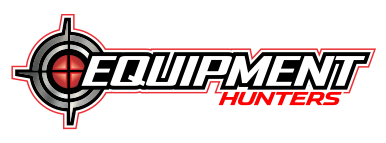5. Maintaining a Positive Displacement Blower
Maintaining a Positive Displacement Blower

The positive displacement blower is the soul of your hydrovac. Less down time in your operations comes from taking great care of it. The problem is that because these blowers always work so well, most people forget to take care of them. When it goes down it will cause your business to stop and a large amount of money is lost from very costly repairs. Trust me, this happens more often than you would think. Maintenance is always key. A few tips from Terry will keep you profitable every day.
A few seconds of maintenance could save you thousands of dollars!
1. Check oil levels: Before starting a positive displacement blower, always check oil levels. Consider putting a company procedure in place to check oil levels before turning it on. Not only should you check, but you need to keep them clean. Just like any piece of equipment, routine oil changes are always required to keep everything moving smoothly. Depending on how hard you work your blower and how dirty it is, they should be changed every 500 to 1000 hours.
2. Sufficient amount of air: Makes sure to have sufficient amount of air feeding your positive displacement blower or it will suffer and cause it to leg and create heating issues. In other words, it’s working harder than it should. Just like us, it needs air to function.
3. Monitor your inlet filter restriction indicators (if equipped): PLEASE do not depend on these indicators. Do routine visual inspections on your cyclone and blower filter. Depending on your restriction, the indicator alone may mean it’s already too late. If your displacement blower is starving for air, the internal temperature could be on the upside of 430 degrees and in some cases temperatures can reach higher than 640 degrees. If your positive displacement blower is starving, it may cause yellowish color on the rotors indicating your internal temperature has been far too high.
4. Regularly change your positive displacement blower filter: If you detect yellowish discoloration, your blower has been overheating and it’s time to act. If you don’t have the proper amount of air flow to your inlet of your displacement blower, it means it’s not getting the enough air and it is not cooling your blower down. Regularly changing your positive displacement blower filter is always a great idea. Like any piece of equipment, you want the air to be clean and free of any debris or muck. You should clean your filter and dry it properly on a daily basis. Again, putting this procedure in your daily maintenance package is a good idea.
5. Run your positive displacement blower and turn on the suction in cold conditions: If you work in cold conditions and park within a facility at night, once you pull your unit outside to warm up, you should always run your blower and turn on your suction for a few minutes. Sitting inside the shop and coming out to cold conditions will create condensation in the internals of the positive displacement blower lobes. This is why we should always run our blowers once we leave shop doors. The condensation will freeze and your blower will not turn. It doesn’t take much moisture to freeze down your blower lobes.
If your blower is frozen and you engage it after traveling to the job site, it will cost you thousands of dollars. Make it routine within your company to run your positive displacement blower every time you warm up your unit in cold conditions.
Doing routine maintenance, and paying attention to your equipment is always affordable. Not doing so is costly.
We all suck up big rocks and big chunks of earth and either pull them out of the hole or out of the way, but I would like to note that this is very hard on your positive displacement blower. It’s not something that we can always get around in our job, however try not to do so for very long. It creates too much pressure, and the positive displacement blower will do what it does best and keep building pressure and nothing will stop it. The harder your machine works, the hotter it will become. The less we do this the longer it will last, but what I have found in this industry is that it’s not something we can get around every day.
If you have an idea for Terry’s Tips or a topic you would like me to cover, feel free to contact me at info@hydrovacnation.ca. We always love positive feedback!
Thank you for reading and stay tuned for the next Terry’s Tips.
Tanks and Dig on!
-Terry Rawn


.png)

























